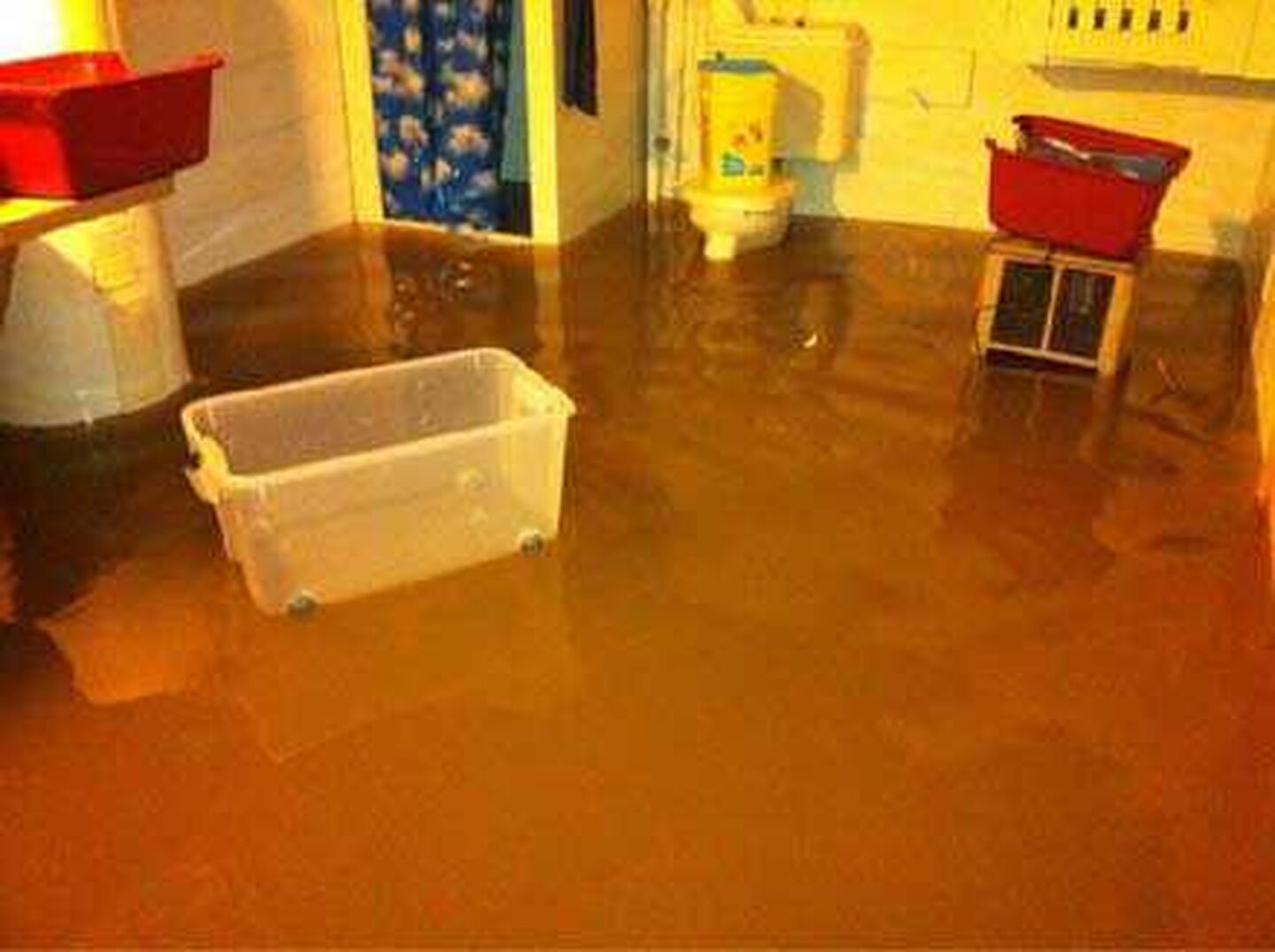What to Do About Rain Water in the Basement

OK, so it rained. That’s usually not a big deal. It’s good for the flowers and trees and farmers, right?
But then, sometimes it RAINS. Really rains. A gully washer. A downpour. A monsoon. Even-the-fast-speed-on-the-windshield-wipers-isn’t‑enough kind of rain.
Even though any rain can eventually affect groundwater around a home enough to produce water in the basement, those great big storms that seem to be a specialty of the American Midwest are almost guaranteed to leave many homeowners with wet feet, if not sending them looking for hip waders.
Of course, rain water gets into the basement in different ways and the way to get it out and keep it out will be different depending on how it got there. It can be conveniently broken down into two categories: sewage or seepage.
What to Do About Rain-Related Sewer Problems
It’s not uncommon for a really heavy rain storm to cause problems with municipal sewers, making them back up and flood basements, especially in Chicago where the storm and sanitary sewer systems are combined into one.
A Sewer back-up generally occurs through below-ground drains and plumbing fixtures as sewer mains become overwhelmed with rain water and push water back through sewer connections. The water that ends up in the basement is usually dirty and contaminated with raw sewage.
Sewer back-ups can be big, messy problems and may require the services of a plumber and/or a specialist in cleaning and repairing (or replacing) drain pipes. City or local government may have to take part as well, especially if the source of the problem lies in municipally-owned and maintained sewer systems.
What to Do About Rain-Related Seepage
There is always water in the soil around a foundation. Sometimes it may be buried deep but it’s there. The level of saturation in the soil varies with climate and long-term rainfall averages but a significantly heavy rain can increase that saturation rapidly, particularly if the home’s gutters are clogged or the downspouts discharge right next to the foundation.
When the soil becomes more saturated, the pressure it applies against the foundation increases as well. This pressure can cause cracks and minor movement of the foundation and it can also force water into the basement through a variety of sources:
Cove Joint – the place where the foundation walls sit atop the footings is a source of seepage that appears through this joint between walls and basement floor.
Floor Cracks – minor cracks in thin concrete floors can admit water
Wall Cracks – thin, non-structural wall cracks are common sources of seepage
Porous Concrete or Masonry – poured concrete and concrete block or brick can become porous enough to admit water.
Cracked or Deteriorated Mortar Joints — water can seep through mortar joints that have cracked from foundation shifts or deteriorated from age.
The water that enters the basement through seepage is generally clean as it comes from underground aquifers or rain and is filtered through soil.
Repairing a seepage problem requires the advice and services of a professional basement waterproofing contractor and is best done by one that employs the latest methods. At U.S. Waterproofing, we have been fixing seepage problems in Chicago-area homes for 56 years but we are constantly improving and seeking the next new product or technique that will serve our customers better and more cost-effectively. Why not ask for our free advice?




